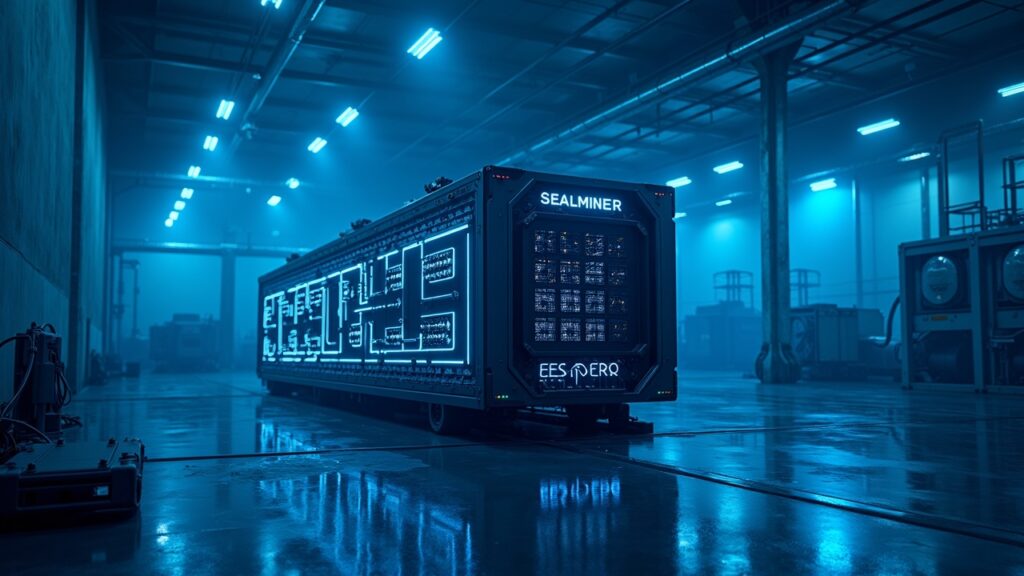Bitdeer now mines Bitcoin with machines it designs and assembles, operating large data centers alongside its former hardware sales. The move reorders the supply chain and affects clients, rivals, and the hashrate market, as the company pairs custom chips with new power sites to protect margins after the halving. Investors, mining operators, and host governments are tracking how this strategy plays out.
Bitdeer tightened its vertical grip by fabricating the SEAL03 chip, building the SEALMINER rig, and plugging both into its own halls. The company no longer limits itself to selling rigs and now competes directly against the same customers who once bought those machines.
By 31 July 2025, Bitdeer’s self-run hashrate reached 22.3 EH/s, with a board goal of 40 EH/s in October and an expectation to surpass that mark before December. This scale-up underscores its shift from seller to mega miner.
The SEALMINER A3 Pro Hydro uses about 12.5 J/TH, the SEAL03 needs 9.7 J/TH, and a SEAL04 design targets 5 J/TH. Bitdeer states these efficiency numbers shrink the all-in cost per coin and let it undercut former hardware clients on both price and power use.
J/TH counts the joules a machine spends to produce one terahash, and a lower value equals higher efficiency. This efficiency benchmark sits at the center of Bitdeer’s cost and competitiveness claims.
Buildout, power capacity, and market impact
By July, Bitdeer had energized 361 MW for its own racks, held roughly 1.3 GW of grid access, and planned to raise that to near 1.6 GW in the third quarter. The buildout spans a new hall in Fox Creek, Alberta, the purchase of a 101 MW gas-fired plant in the same province, and a joint venture with Bhutan targeting 600 MW of extra capacity by mid-2025.
The treasury held 1,527.5 BTC on 4 July 2025, and NASDAQ ticker BTDR moved with Bitcoin’s price. These figures frame the company’s balance sheet exposure and public-market sensitivity.
The change from seller to mega miner creates direct competition with former buyers by offering cheaper, more efficient capacity. Independent rig makers and hosting farms feel margin pressure as one firm controls design, production, and deployment across the stack.
If expansion continues, more hashrate could land inside a single entity, shrinking outside demand for racks or power. At the same time, Bitdeer adds AI and HPC workloads so revenue no longer depends only on coin rewards.
The next checkpoint is the first shipment of SEALMINER A3 units in October 2025. Once those rigs hash, the books will show whether the integrated design gives Bitdeer a lasting edge over the customers it now rivals.

